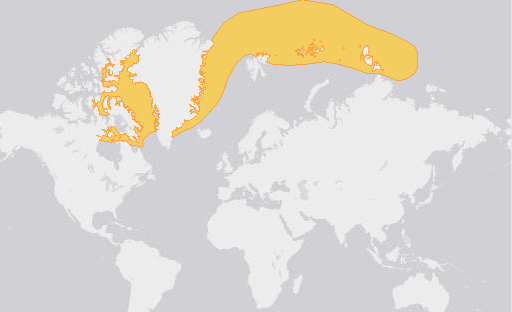It’s Christmas season and for all those of you looking to the North Pole at this time of year, we have a very special series of blogs lined up! Every Monday leading up to Christmas we highlight one Arctic species of cetacean. Today is the last one in the series and I’m sure you will all agree that there is something particularly magical about this particular cetacean!
The Narwhal 
(Monodon monoceros)
Narwhals live in the Arctic, in the freezing waters around Greenland, Canada and Russia. Their closest relatives are the snowy-white Beluga whales, and are sometimes referred to as the ‘unicorn of the sea’ for obvious reasons!
Appearance: Perhaps the most distinctive of all cetaceans, the narwhal is famous for its long tusk, which occurs in all males and around 15 percent of females. They are usually around 3.5-4.1m long (excluding the tusk!) and males are slightly bigger than females. When they are born, narwhals are a dark grey in colour and as they age, become a more mottled grey with lighter parts as they get older. Some older males can be almost pure white. Like their Beluga relatives, they have no dorsal fin.
Weight: Around 800-1,600kg
Lifespan: Up to 50 years old
Diet: In winter, they eat mostly flatfish, found under the dense Arctic ice. During the summer, they mostly eat Arctic cod and Greenland halibut.

Did you know?
-Narwhals can dive up to 1,500 metres (4,900 feet) in depth, with dives lasting up to 25 minutes.
– Narwhals, like most toothed whales, communicate with “clicks”, “whistles”, and “knocks”.
– Their name, ‘narwhal’, is Norse for ‘corpse whale’, referring to their pale dappled skin
-Some medieval Europeans believed narwhal tusks to be the horns from the legendary unicorn. As these horns were considered to have magic powers, such as neutralising poison, they were used to make cups that were thought to protect the user from any poison that might have been slipped into their drink.
– Inuit people are allowed to hunt narwhals legally. They use almost all parts of the narwhal and rely on them, and other sea mammals, for a large part of their diet.
– Their tusks can grow as long as 10 feet, and some narwhals can even have two of them! These tusks are very sensitive to touch, with up to 10 million nerve endings inside.
Distribution & Conservation Threats
The world population of narwhals is currently estimated to be around 75,000, and some sub-populations have declined in recent years, which has given them a ‘near-threatened’ status. Narwhals thrive in the extreme Arctic conditions, but their winter homes are at increasing risk due to climate change and human activity such as oil drilling.
While this species typically does not occur in the UK, there were several strandings in the 1940s and one live sighting in the Hebrides in 1976.
***
written by Pippa Southern
Picture credit: Paul Nicklen/National Geographic/WWF
Distribution map: IUCN red list website

























